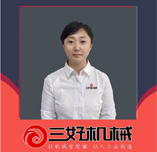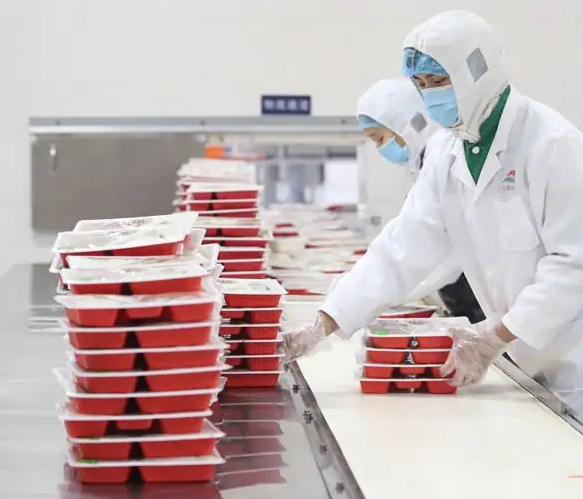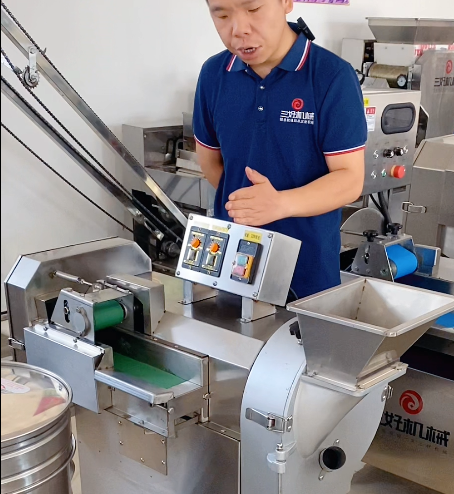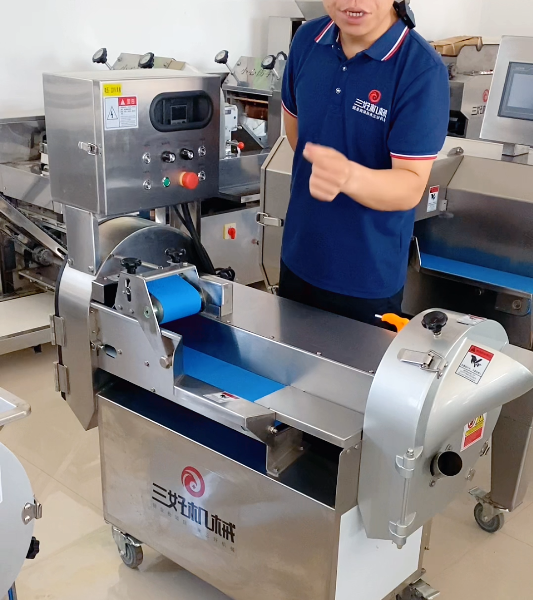Auxiliary processing series
+86 18322071688







In the fast food distribution industry, improving the processing of ingredients is a key link to ensure stable daily supply. As an indispensable equipment in the kitchen, the performance of vegetable cutters directly affects production efficiency and cost control. Faced with the wide variety and uneven price levels on the market, how should practitioners choose rationally? Sanhao combines many years of experience and analyzes one by one with the old iron in front of the screen to explain in detail the three vegetable cutter models that adapt to distribution centers of different sizes, helping you avoid blind spots in your choice. basic style The small vegetable cutters are mostly lightweight versions of the classic SH-800 model. By simplifying the circuit and transmission system design, they have become commonly used equipment among small and micro merchants. Their core advantages are that they are simple to operate and occupy a small footprint. They can realize slicing, basic functions such as slicing, and slicing. The cutting effect is not significantly different from medium and large equipment. They are suitable for stalls with a daily processing capacity of about 800 copies, mom-and-pop stores or distribution points in initial trial operation.

Sanhao 801 vegetable cutter is a mainstream model in the mid-end market. It is known for its durability and compatibility. The average daily processing capacity can reach 1000-2000 parts. It is suitable for medium-scale distribution centers
However, the quality of this model on the market is quite different. When purchasing, we need to focus on two core configurations:
1.Electrical Components: The Key to Determining Equipment Life high-quality models use a copper core motor with a frequency converter, which can automatically adjust the speed according to the hardness of the ingredients to reduce motor loss. While low-cost models often use an aluminum core motor and speed control box, which have low speed control accuracy and are prone to overload. It is recommended to check the motor nameplate, select a model with a power of 1.5kW or more and equipped with a frequency converter.

2. Transmission System: Judging Quality from Noise and Stability The no-load noise of a qualified 801 vegetable cutter should be less than 70 decibels. There should be no obvious vibration in the body when cutting vegetables. It relies on precision-processed steel gears and sealed bearings. During machine testing, you can observe whether the cutter head is running smoothly and whether the feeding is smooth., avoid uneven cutting caused by transmission clearance. PLE Aiming at the operating pain points of the 801 model, the separate Sanhao 806 vegetable cutter improves intelligence and ease of cleaning through structural innovation. It is suitable for large-scale distribution centers with a daily processing capacity of more than 1500 pieces. Its core advantages are: -Visual CNC system: Set leaf stem cutting data with one click, eliminating the need for manual knife changes, greatly shortening the switching time of multiple categories. -Dry and Dry Separation Design: The motor and transmission components are designed in a divided manner to support direct flushing of the transfer site with a water gun.
-dual motor drive: Cutting and conveying power are separated, which can process high-fiber ingredients without getting stuck, and the average daily processing capacity can reach more than 3000 portions.
1. Core components: cost gap between motor (size) and speed control system (frequency converter/speed control box/PLC)
2. Manufacturing process: mold accuracy, welding technology, material selection (metal parts/plastic parts).
3. Waterproof rating: The high-profile Sanhao vegetable cutter has better waterproof functions. PLE -Growth period (500- 2,000 copies per day): Select a SH-801 vegetable cutter with standard configuration (frequency converter + steel transmission). -Stability period (more than 2000 orders per day): The separable SH-806 vegetable cutter has its CNC system and easy-to-clean design to improve human efficiency and adapt to multiple categories and high-production scenarios.
There is no 'good' choice of vegetable cutters. The key is to match it with its own business scale and ingredient processing needs. Sanhao recommends that practitioners come to the factory to test the equipment on the spot based on factors such as order volume, complexity of ingredient categories, and cleaning standards. Cutting effect, noise level and ease of operation.

Catering practitioners in front of the screen, what specific problems have you encountered when using vegetable cutters? What other details need to be paid attention to in actual operation of different models? Welcome to share your experiences or ask questions in the comment area, or you can forward them to friends around you who are preparing equipment. If you want to know the detailed configuration or pitch-avoidance techniques of a certain model, you can use a message or private message in front of the screen to discuss the selection of kitchen equipment together!
+86 18322071688
 WhatsApp
WhatsApp